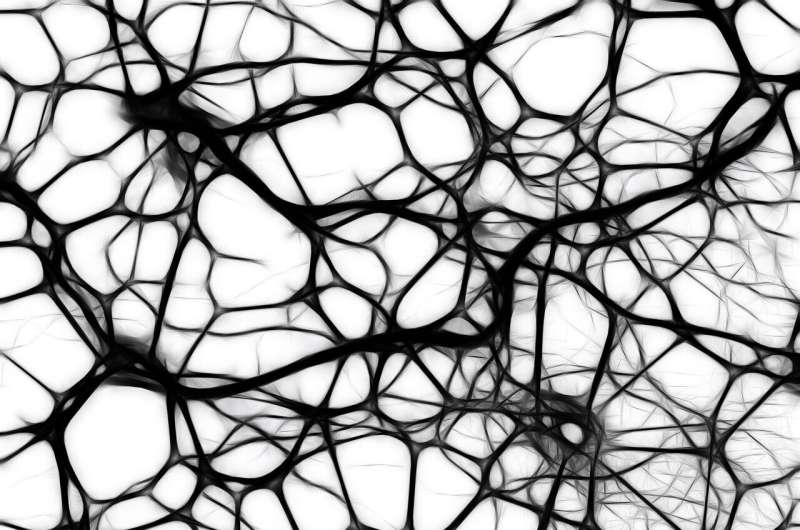This article has been reviewed according to Science X's editorial process and policies. Editors have highlighted the following attributes while ensuring the content's credibility:
fact-checked
peer-reviewed publication
trusted source
proofread
Research examines how protein aggregates can trigger neurodegenerative diseases

Neurodegenerative diseases are characterized by the deposition of clumped proteins in the brain and progressive neuronal cell death. Although the causal link between protein aggregates and neurodegeneration is clear, how misfolded proteins trigger cell death is not known.
A team headed by Professor Jörg Tatzelt, head of the Department of Biochemistry of Neurodegenerative Diseases at Ruhr University Bochum, Germany, has shown that misfolded prion proteins can inactivate the TDP-43 protein. TDP-43 is essential for maintaining protein balance in all cell types, especially in nerve cells. A dysfunction of TDP43 is associated with amyotrophic lateral sclerosis and frontotemporal dementia.
These findings are crucial for understanding the mechanisms underlying neurodegenerative diseases. The researchers published their results in the journal Brain on 5 September 2023.
Protein aggregates and neurodegeneration
The causes of neurodegenerative diseases such as Alzheimer's disease, Parkinson's disease, frontotemporal dementia and prion diseases can be many and varied. But there is a common denominator, namely protein misfolding and the occurrence of protein deposits in the brain. "Various approaches and models have shown that misfolded proteins play a crucial role in the disease process," says Tatzelt. "Still, there's an ongoing debate about the nature of the harmful protein species and how misfolded proteins selectively damage specific neurons."
Studies on genes associated with pathologies have revealed two basic mechanisms by which misfolded proteins can lead to neurodegeneration: First, misfolding can cause the protein to acquire toxic activity; Second, the misfolding can lead to a loss of the physiological function of the protein, which impairs important physiological processes in the cell.
"The assumption used to be that every neurodegenerative disease was characterized by the misfolding of a specific protein," explains Tatzelt. "However, it has since been shown that misfolded proteins that are produced more frequently in one disease can also induce the aggregation of other proteins, a mechanism referred to as cross-seeding."
The prion protein and TDP-43
TDP-43 (TAR DNA-binding protein 43) is a protein that helps to translate genetic information into specific proteins. It thus helps to maintain the protein balance in nerve cells. The clumping of TDP-43 in the cell is a characteristic feature in the brains of patients suffering from amyotrophic lateral sclerosis or frontotemporal dementia.
Misfolding of the prion protein triggers prion diseases such as Creutzfeldt-Jakob disease. All research findings to date indicate that the misfolded prion protein acquires toxic activity. However, the exact mechanisms by which disease-associated prion proteins trigger the death of nerve cells are only partially understood.
TDP-43 loses its physiological function through PrP-mediated cross-seeding
Using in vitro and cell culture approaches, animal models and brain samples from patients with Creutzfeldt-Jakob disease, the researchers showed that misfolded prion proteins can trigger the clumping and inactivation of TDP-43. The prion proteins interact with TDP-43 in vitro and in cells, thus inducing the formation of TDP aggregates in the cell. As a result, TDP-43-dependent splicing activity in the cell nucleus is significantly reduced, leading to altered protein expression. "Prion protein and TDP-43 are partners in crime in neurodegenerative diseases, so to speak," says Tatzelt.
An analysis of brain samples showed that in some Creutzfeld-Jacob patients, TDP-43 aggregates were found alongside the prion protein deposits. This study has revealed a new mechanism of how disease-associated prion proteins can affect physiological signaling pathways through cross-seeding.
More information: Stella A Polido et al, Cross-seeding by prion protein inactivates TDP-43, Brain (2023). DOI: 10.1093/brain/awad289

















